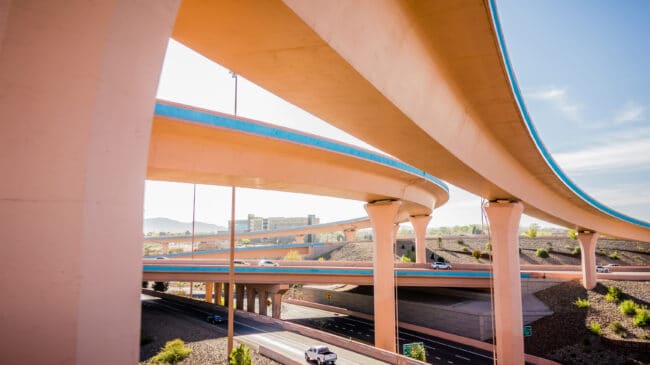President Joe Biden recently unveiled his $2.3 trillion infrastructure proposal and is planning to fund it mostly via corporate tax increases, with the rest of the money apparently coming from more federal borrowing. But if the White House and Transportation Secretary Pete Buttigieg truly want a bipartisan bill, they should invite private capital to play a major role in paying for portions of the infrastructure plan. That would reduce the extent of federal tax increases and borrowing.
Few people understand how much private capital is available and in use across the world to finance infrastructure projects. Last year alone, infrastructure investment funds raised a near-record $102 billion in equity. Despite the COVID-19 pandemic, they invested $54 billion in projects worldwide last year. Those who invest in these funds are institutional investors, such as insurance companies and public pension funds. They seek to invest equity in long-lived projects that generate revenue and are a good match for their long-term liabilities.
The large majority of this private investment goes to projects outside the United States. Other countries have privatized airports, seaports and toll roads, so the funds can invest equity in either acquiring or modernizing them. But in this country, those assets are owned by government. The only way funds can invest equity is if the facilities are leased long-term as public-private partnerships. Most current public-private projects are brand-new facilities, like the express toll lanes added to freeways outside Washington, DC, and in Dallas. But there are a few examples of public-private partnerships improving existing facilities via long-term leases, including the Indiana Toll Road and the San Juan International Airport.
The Biden administration’s Build Back Better program could encourage state and local governments to modernize aging and outdated highways, bridges, and utilities via equity investments from infrastructure investment funds. Take the Interstate Highway System, for example. A 2018 study by the Transportation Research Board found that most of the original pavement is wearing out. Some major bridges and interchanges need replacing, and truck-intensive corridors need more lanes. The estimated cost: $1 trillion over 20 years.
Many of these would be ideal projects for public-pension fund investment. U.S. and Canadian pension funds are already investors in the public-private partnership companies of the Indiana Toll Road, Chicago Skyway, and the Virginia express lanes, diversifying their portfolios in hopes of a higher return. Were Congress to permit tolling to finance the reconstruction of individual corridors of Interstate highways, provided states were willing, pension funds and other equity investors would jump at the chance to finance such megaprojects.
In recent years, Congress has taken a few steps in this direction. It authorized the issuance of tax-exempt private-activity bonds, to put public-private partnerships on a level cost-of-debt basis with government agencies. And it has loosened what used to be a ban on using tolls on the 95% of the interstate system originally developed with 90% federal funding.
But those provisions aren’t enough if the goal is to overhaul the interstates at a cost of $1 trillion. The current federal cap of $15 billion worth of private-activity bonds has recently been reached, and a bipartisan bill has been introduced to double that. But the law authorizing such bonds also referred exclusively to new public projects, when today’s need is mostly to rebuild existing infrastructure. That needs to be fixed. Also, states still aren’t generally permitted to finance Interstate highway modernization with tolls. This option should be available to all states, with protections to ensure it is done in a fair, customer-friendly way.
Several weeks ago, the nonprofit Bipartisan Policy Center hosted a webinar on paying for the new infrastructure program. Much of the event dealt with the case for long-term public-private partnerships to finance such an effort. This is the path to a bipartisan bill: Don’t fund it exclusively via borrowing. Don’t risk economic recovery by enacting large federal tax increases. Open the door to hundreds of billions in private capital from investors like public pension funds. That will help build infrastructure back better.
A version of this column previously appeared in The Wall Street Journal.

